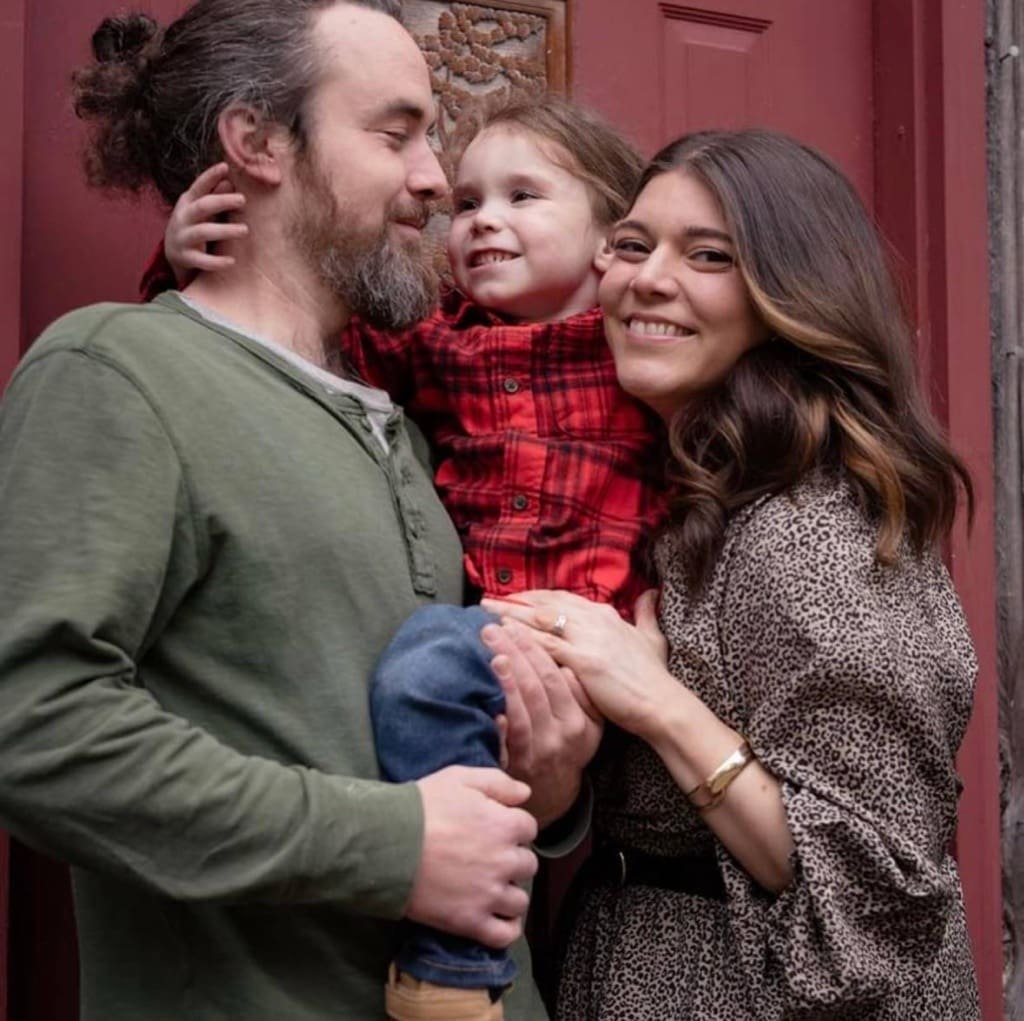Lindsey blends bold career moves with grounded leadership. On the day of her promotion to Global Director of Solutions at catworkx, she joined us to reflect on the journey that brought her here—and the kind of leadership she’s shaping next.
Bio
Lindsey Norman built her tech leadership career from the ground up—starting on the client side of agile transformations and growing into senior consulting and pre-sales roles across fintech and enterprise. Today, she serves as Global Director of Solutions at catworkx, where she leads enterprise-level Atlassian solutions for clients across industries.

The Conversation
Thank you for joining HERpower, Lindsey. Please, tell us about yourself and your current role.
Lindsey: I’m currently the Global Director of Solutions at catworkx – actually, this role is being announced today, just a few hours after our conversation.
I’ve been transitioning into it for about six weeks now, having started at catworkx in March.
My path into the Atlassian ecosystem started on the client side. I worked at an insurance company going through a major agile and Atlassian transformation. I started as a subject matter expert and grew into a project manager role.
Eventually, I became the main liaison with the consulting firm running the transformation. By the time the project ended, I realized I’d enjoyed the work so much that I didn’t want to leave it behind. I asked the vendor if they were hiring, and that’s how I crossed into the consulting world.
I spent two years at Gurnet Consulting as a principal consultant focused on fintech and financial services, then moved to Praecipio, where I shifted to what I call “the dark side” – pre-sales architecture. Instead of delivering solutions, I was designing them, writing contracts, and then moving on to the next engagement.
But before all of that—before Atlassian, before enterprise consulting—I spent seven years bartending my way through college. I graduated late with a degree in mathematics, still unsure where it would take me. What I did know was that the skills I’d built behind the bar—reading people, handling chaos, communicating clearly—would stay with me, and they have.
Every role I’ve taken has moved me further outside what felt familiar. At work, I am often one of the only women in the room in a technical role. At home, I’m a career-focused professional in a town where that’s not the norm. I’ve grown comfortable with not fitting the mold. In fact, I’ve learned to see it as a kind of strength.
Where do you call home?
Lindsey: I live in Rhode Island, about an hour outside Boston, with my husband, 5-year-old son, and two cats (we used to have chickens, but that didn’t end well). I’m also the oldest child in my family, so I usually host the holidays. It’s a full house here.
Motherhood and tech careers often collide in messy ways. How do you navigate that?
Lindsey: The two worlds—family and work—are always in competition. Some days it’s minute-by-minute navigation. Everything shifted for me after COVID. Before the pandemic, I didn’t think I could be in consulting. I had a newborn, and back then, consulting meant being on the road for six months at a time—completely removed from home life. That wasn’t sustainable.
But the industry changed. Enterprise work became more remote, more flexible. I could say yes to opportunities I previously had no way to pursue.
And yes, this shift opened up access for women, especially working moms. But I think it goes deeper than that. Remote work isn’t just good for women. It’s good for organizations. When I show up, I bring all of me: mother, strategist, communicator, collaborator. I don’t check parts of myself at the door. My perspective as a parent isn’t a complication—it’s a contribution. It shapes how I approach leadership, how I solve problems, and how I connect with teams.
What has your experience been like as a woman in tech leadership?
Lindsey: It’s a mix of support and bias. I’ve great allies who believed in me and helped open doors. But I’ve also learned that support often came with strings attached.
The hard truth I realized pretty early on, and in nearly every position before catworkx— was that support was conditional. I was encouraged and backed… but only as long as it aligned with someone else’s agenda. Once my growth stopped serving their narrative, that support became silence or resistance.
When you’re just starting out, any support feels like a lifeline. I was grateful—of course I was. But I slowly understood that I couldn’t build my foundation on whether or not someone else chose to validate me.
At nearly every transition point in my career, someone told me I wasn’t ready. Literally. They’d say, “You’re not quite there yet.” And then I got there and was ready.
That taught me to trust my own instincts.
What needs to change so that women aren’t constantly having to prove themselves?
Lindsey: We need to stop measuring our worth by external validation. Especially as women—and especially early in our careers—we’re taught to look outward for approval. We wait for someone to tell us we’re ready, we’re good enough, we’re allowed to lead.
But the truth is, the only person who lives with your choices is you. That means the voice you trust most has to be your own.
Another piece of this is emotional expression. Staying grounded in high-pressure situations has become one of my biggest strengths. It didn’t come from a playbook; it came from experience—especially as a woman in tech. Learning to keep things calm and constructive taught me how to lead under pressure, navigate tough client conversations, and speak with clarity when it mattered most.
There’s a lot of talk about leading with emotion. What’s your take on that?
Lindsey: I’m someone who feels deeply. A sad song will make me cry. But when it comes to leadership, I’ve come to understand that being emotionally aware isn’t the same as being emotionally exposed.
For me, emotions are signals. If I feel shame, frustration, or discomfort in a meeting, I’d pause and ask myself: what’s this telling me? Is something misaligned? Do I need to step in or step back?
That kind of emotional clarity helps me stay rooted in my values. It helps me make choices that are thoughtful, not reactive. And honestly, I think that’s one of the most underrated strengths in leadership. We talk a lot about decisiveness, but not enough about discernment.
So no, I don’t think leading with emotion means crying in a boardroom. It means leading from a place of internal alignment, where your emotions aren’t driving the car—but they’re definitely informing the route.
You’re transitioning into a global leadership role. What does that shift feel like?
Lindsey: This is a big moment for me. Honestly, it’s layered and emotional.
Up until now, I’ve always been the person who rolled up her sleeves, took the problem, and fixed it. That instinct to dive in and just handle it has served me well for years. But I’m starting to learn that the skills that helped me grow into leadership aren’t necessarily the same ones that will help me grow inside it.
Now, my job is not just to do—it’s to create the conditions for others to succeed. It’s to build the structure, trust people with the space to grow, and guide them without taking over. That’s a big mindset shift.
There are moments I have to sit on my hands and let something unfold, even if I see a different path. I’m learning to resist the urge to swoop in. If I step in too fast, I rob someone else of the chance to rise.
And then there’s the cultural layer. I am currently the only American in this global leadership circle. I bring a different rhythm, a different communication style, a different urgency. That can be powerful, but it also means I have to be intentional. My words land differently now.
Sometimes I say something in a meeting, and people move on it instantly. No debate, no back-and-forth. That’s new. I’m used to having to sell my ideas, make the case, circle back. Now I need to weigh my words more carefully, because they carry more weight.
I don’t take that lightly. Being welcomed into this role—across cultures, across oceans—is something I hold with deep humility and real gratitude. I know what it means to be trusted as an outsider in a legacy organization. It’s not something I assume or take for granted. I’m constantly learning how to honor the history, listen to the pace, and contribute without overpowering.
There is fear, of course. But not the kind that tells me to back away. It’s more like standing on a ledge, knowing the leap is big but worth it. That fear tells me I’m stretching—and to me, that’s exactly what growth should feel like. If I weren’t a little scared, I’d be worried I was playing it too safe.

Many women right now are navigating job changes. What advice do you have for them?
Lindsey: First, you’re not alone. This market is confusing.
The traditional job application process is broken. Hundreds of resumes, no response. It’s disheartening.
What’s worked for me? Building real connections. Attend meetups, conferences—anything you can within your means. Stay connected and involved. You’d be surprised what you find. You never know where relationships will lead. You might think a connection isn’t important because they’re not directly relevant to you, but the butterfly effect is real.
Most of my career moves came from my network and reputation.
This job market, especially as AI comes around, is uncertain for all of us. Reputation becomes ever more important. People want to work with people they like—whether that should be true or not, it is true in our society. Find people you enjoy, and try to be somebody others want to be around. I’m not advocating for women to people-please, but the way you carry yourself and your reputation can carry you pretty far.
Any final thoughts for women considering tech leadership?
Lindsey: Every time I’ve grown, it’s felt lonelier.
Not because people weren’t supportive—but because fewer and fewer people around me had walked the same road.
But there’s real beauty in creating a path where there wasn’t one.
That’s what leadership looks like sometimes: stepping into a space you’ve never seen filled before and choosing to stand there anyway.
So if you’re standing at the edge of something new and wondering whether you belong there—the answer is yes. Even if it feels uncomfortable. That discomfort isn’t a warning. It’s often a sign that you’re exactly where you need to be.
Final plug—why should we visit Rhode Island?
Lindsey: It’s called the Ocean State for a reason!. There are so many beaches. You can go from city to farmland to coastline in under 30 minutes. It’s small but full of personality.
We’ve got amazing food, thanks to Brown University drawing in people from everywhere. And we’ve got a kind of rhythm and loyalty that’s hard to explain.
For example, my mother visits the same restaurant every week on the same day, and often my husband, son, and I happily join her. People just don’t leave easily.
And even though I’ve traveled for work, seen new cities, met people from across the globe—Rhode Island still feels like the place I want to return to.
Thank you, Lindsey! It’s been a pleasure getting to know you.
Connect with Lindsey
If you wish to connect with Lindsey and learn more, seek advice, or share similar experiences, feel free to reach out to her via LinkedIn.
